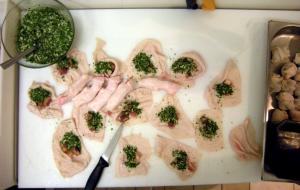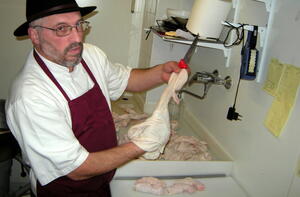Pieds et paquets: never mind the name, enjoy the taste!
French delicacies usually come with delicate names. Think of bouillabaisse, ratatouille or, God forbid! cuisses de grenouilles (frog thighs) and fricassée d'escargots (snail fricassee).
But what of "pieds et paquets" which, in English, could translate as "feet and bundles of tripe"?
You've probably read this name on the menu, at the "Boeuf Chantant" (The Singing Ox)—the butchery-restaurant in Saint-Paul-lez-Durance or at some other eating-place in the region. But you didn't dare to order.
Well ... too bad for you!
"Pieds et paquets" is one of the finest, most subtle dishes of Provence cuisine. The recipe was born out of poverty, generations ago, when meat was rare and every animal part, whether noble or not, had to be used.
"Pieds et paquets," explains Didier Raggi, the owner of the Boeuf Chantant, "is the only way to eat the lambs feet."
Once carefully cleaned and slow-cooked for some four hours, bones and hoofs become so tender they almost melt on the tongue. And so does the accompanying bacon-stuffed tripe—actually, the lamb's rumen, or paunch—once it has simmered in a carrot, onion, garlic, parsley and herb stew for six to eight hours.
"Add a bit of white wine and some tomato coulis; a calf bone to give some thickness to the stew and you'll get something incomparable in taste and texture."
Didier Raggi, who settled as a butcher 15 years ago in Saint-Paul and recently opened his restaurant on the newly developed area at the village entrance, makes pieds et paquets on the last weekend of every month except December.
He also makes fromage de tête, which has nothing to do with cheese and requires a pig's head, along with a couple of extra pigs' tongues and a few pigs' feet.
But that's another story ... Bon appétit!



